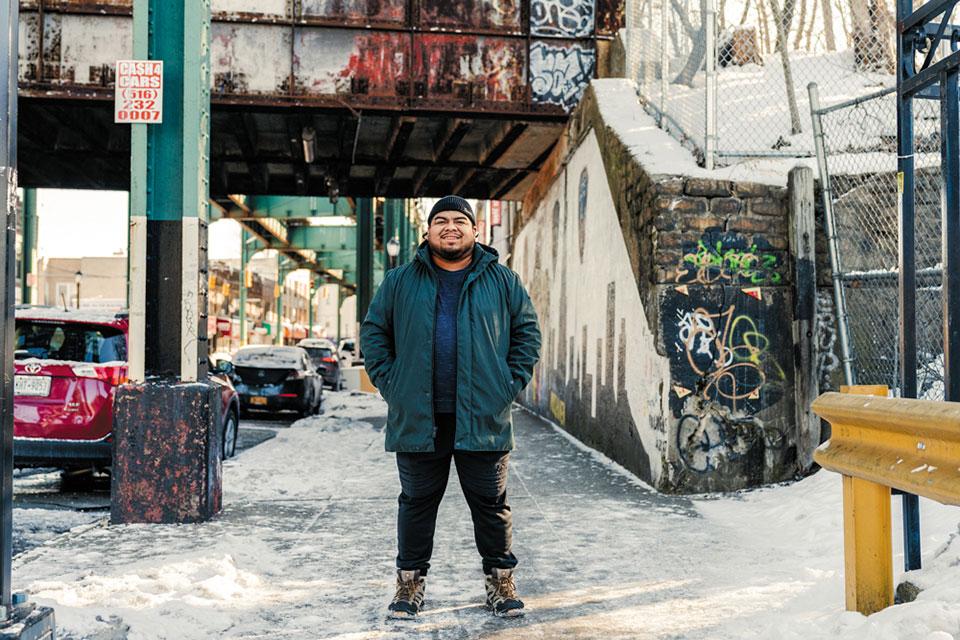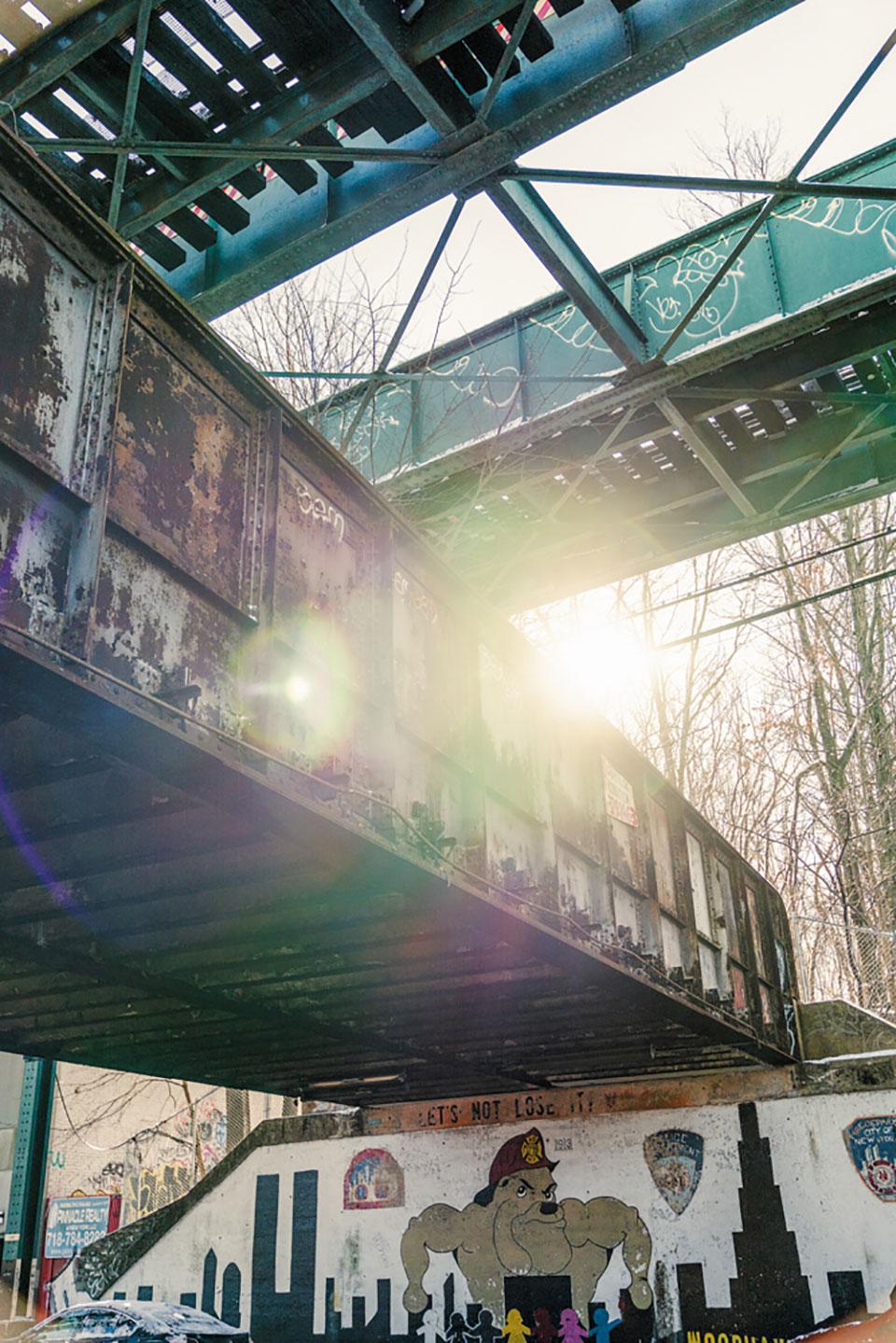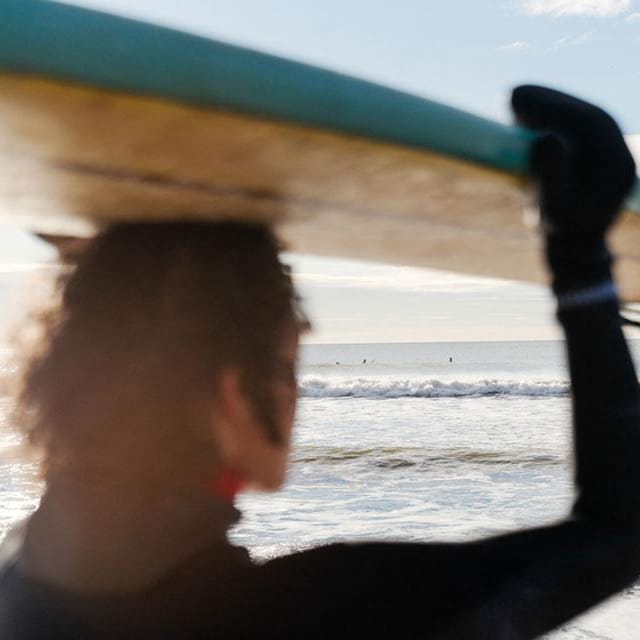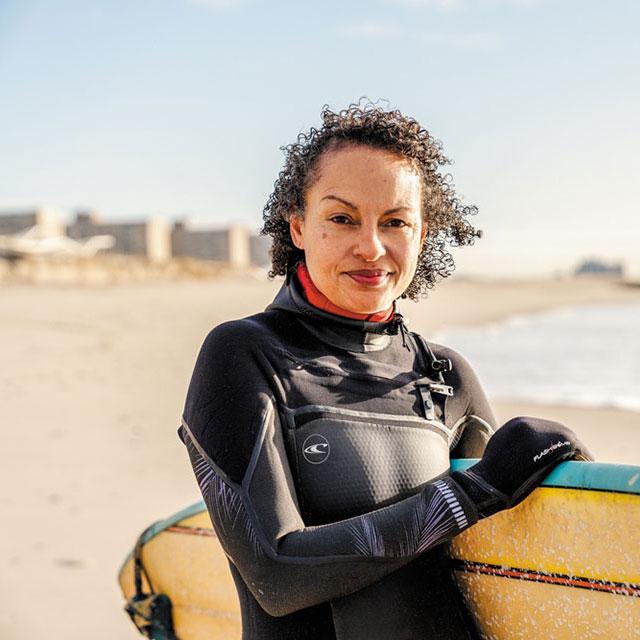A QueensWay enthusiast on how trails helped him endure the pandemic.
By Lisa W. Foderaro | Photographs by Tara Rice
Published May 18, 2021
 When Ruben Ramales goes for walks with his pit bull, Lily, they head for the network of trails that winds through the eastern end of Forest Park.
When Ruben Ramales goes for walks with his pit bull, Lily, they head for the network of trails that winds through the eastern end of Forest Park.
Forest Park—165 acres of tulip trees, scarlet oaks, shagbark hickories, and black cherry trees—is one of the largest open spaces in Queens. Considering he can walk there in about 15 minutes from his home in the borough’s bustling Woodhaven neighborhood, Ramales says the forest is surprisingly wild … a place where Lily can sniff and explore and where Ramales can escape the hubbub and step out of his newly circumscribed life of Zoom meetings.
“What I love about Forest Park is that it does have a lot of untouched space, meaning you actually have real nature,” said Ramales, who’s executive director of the Queens chapter of the American Institute of Architects.
Their regular route to Forest Park runs not far from an overgrown viaduct, which holds the forgotten tracks of the Rockaway Beach branch of the Long Island Rail Road. The line once ferried people across Jamaica Bay and onto the Rockaway Beach peninsula, but the tracks have sat silent for nearly six decades. Now the rusting structure snakes behind tidy homes, past auto parts stores, alongside schools, and right through Forest Park. Its rail bed is covered with weeds, but also handsome oaks and Norway maples, self-sown over decades.

But when Ramales looks at it, he sees the potential beneath the weeds. He sees over three miles of public right-of-way and 47 acres of city-owned land. He thinks of the 322,000 people who live within a mile of the railway’s path through Queens—many of whom don’t currently have a park close to home. In the abandoned railway, Ramales sees a future park with tons of potential to connect people to the outdoors throughout Queens.
He believes the so-called QueensWay could be his borough’s answer to the High Line, the elevated park that runs through some of the priciest neighborhoods in Manhattan. But the QueensWay would offer park access to low- and middle-income families in areas like Ozone Park, Woodhaven, Richmond Hill, and Rego Park. Ramales, who’s on the board of the nonprofit Friends of the QueensWay, says that the linear park would be twice as long as the High Line and have seven times its acreage.
Along with Friends of the QueensWay, we published a study in 2014 that presented a vision for the trail as a hub for walkers, bicyclists, and yes, foodies.
“It’s kind of the beauty of Queens: different cultures, ethnicities, and languages,” says Ramales, who helped move the plan for the QueensWay forward when he worked at Trust for Public Land from 2014 to 2018. “When I’m in this area, there’s no way I’m not going to try Guyanese and Trinidadian food.”
If the vision for the QueensWay is ever realized, it will likely be long after the pandemic has receded into memory. The joint study estimated a $120 million cost to build the park. But the project’s backers say its grand scale is exactly the point—that Queens has been too long overlooked for investments from the ambitious to the ordinary. The devastating effects of decades of underinvestment and structural racism can be seen in the severity of the COVID-19 outbreak in Queens, where a crowded housing market and an inadequate health care system have contributed to disproportionately high rates of infection and death from the virus.
“Queens has a clear need for equitable investment of all kinds, including in parks, which offer significant health and economic benefits,” said Carter Strickland, state director for New York and New Jersey at Trust for Public Land. “It’s a big job, but it’s no less than what every kid growing up in Queens deserves.”

Donate to become a member, and you’ll receive a subscription to Land&People magazine, our biannual publication featuring exclusive, inspiring stories about our work connecting everyone to the outdoors.





